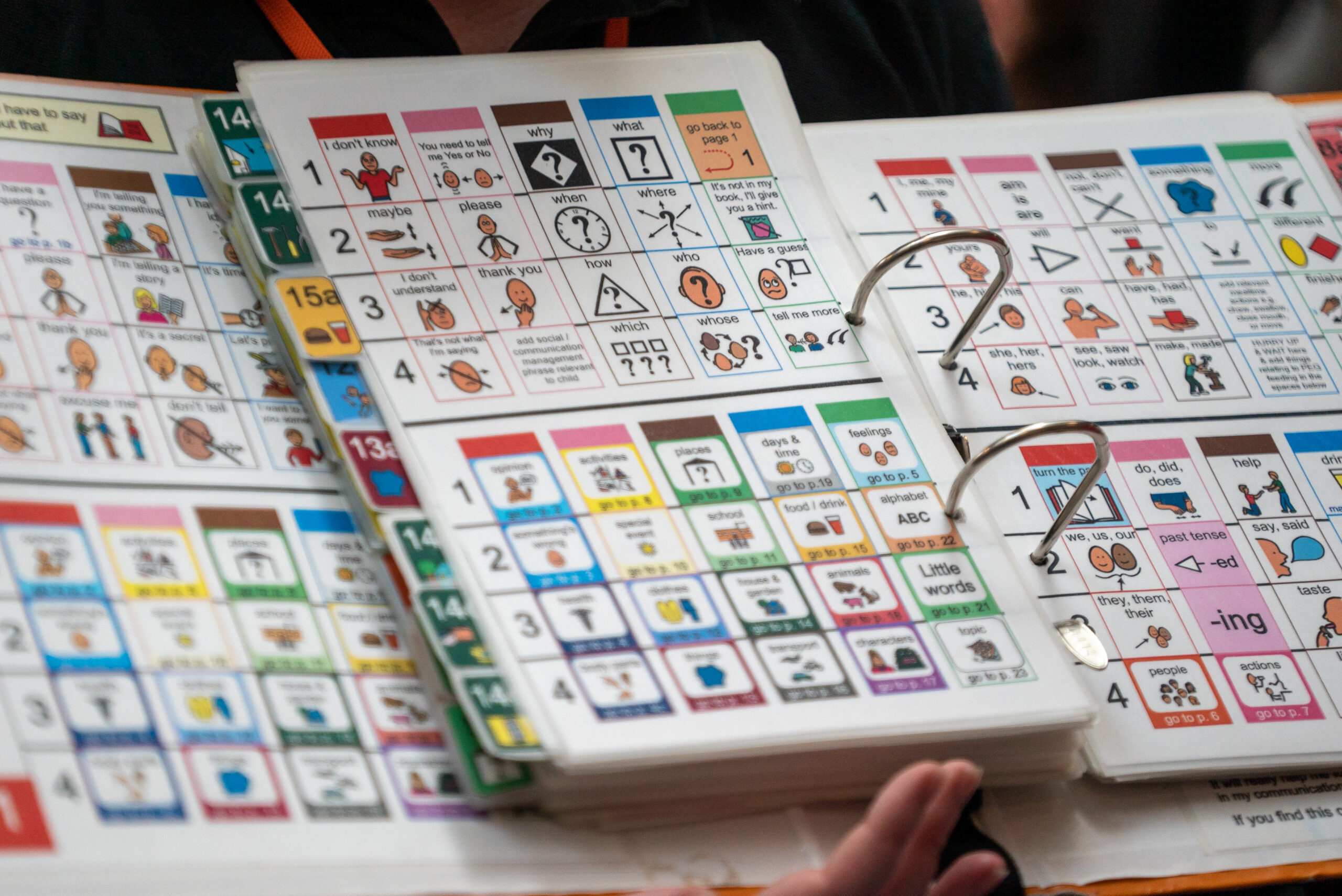12 tips for Augmentative and Alternative Communication
Augmentative and Alternative Communication (AAC): how to support your child
What is AAC?

What is AAC?
Augmentative and Alternative Communication covers a range of strategies and tools which help children communicate. These may be simple letter or picture boards, or very sophisticated computer-based systems.
How do I support my child to use AAC?
Your child may use one or more forms of AAC, and it can seem daunting at first – for you and them. But these 12 tips for AAC should help…
- 1. With Augmentative and Alternative Communication, model, model and model again! When using AAC yourself, you demonstrate to your child how they can communicate. This is known as modelling. For example, with a communication book, point to the pictures whilst saying the key words. Model all types of communication, including requests, comments and questions
- 2. Communication is fun! Be playful and creative and tap into your child’s interests. This will help motivate your child to communicate
- 3. Wait, watch your child and listen. Allow your child time to process and think about what you’ve said, as well as time to respond. Pausing is a natural part of communication
- 4. Your child needs time to explore AAC – just as a baby babbles before they learn to speak. Let your child see different types of words used, including nouns (objects, items and people), verbs (action words), adjectives (describing words) and prepositions (such as ‘on’ or ‘under’)
- 5. Your child should be free to communicate about anything, not just make requests or answer classroom questions. Autonomous communication is being able to say whatever they are thinking!
- 6. It can take a while for your child to learn language. Keep modelling, and don’t worry if your child doesn’t get it immediately. All children need lots of repetition to help them learn. Show your child how to get to different words and repeat the process by going through the same pathways several times too
- 7. Ensure the AAC is available, always! If your child’s AAC system is not to hand, they can’t use it! Children with electronic systems will need a paper-based back up for times when their electronic system isn’t appropriate (e.g. in the bath, in the car)
- 8. There may be times when it’s not appropriate to talk, but you should never take away the AAC system. Instead, teach your child the rules and explain there are times they need to listen.
- 9. Help your child learn new language by repeating their words back to them using their AAC and then add another word. For example, if they say ‘cat’ you could say ‘black cat’.
- 10. Sometimes we need to help children using AAC to think about what they may be trying to say with the words they choose. For example, if they say ‘music’, you might say, ‘Oh, are you telling me you like this music’. ‘Tell me more’. Give your child opportunities to use their AAC further by asking them tell me more. This encourages them to expand sentences, give details and communicate freely
- 11. As you use your child’s AAC, say aloud everything you are doing. This teaches your child the pathways to find specific words as well as how to operate the software functions For example, ‘I’m looking for my word, I think it’s in “descriptions”’… ‘I’m going to press clear because I’ve finished that sentence’!
- 12. Never be afraid to make mistakes. Your mistakes help your child understand how to solve their own communication problems. For example, ‘Oh dear, I’ve make a mistake, let’s delete that word’ or ‘Oops, that wasn’t the right category, we’ll go back’
